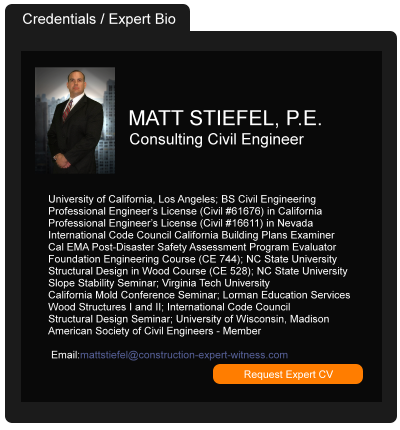Evolving Climate Patterns and Extreme Weather Demand New Building Methods
May 22, 2023 —
Annette Rubin - Construction ExecutiveCompared to the rest of the world, most buildings in the United States are relatively young. But most residential and commercial properties could use a makeover. Buildings constructed over twenty, fifty and one hundred years ago are, unsurprisingly, not as energy-efficient or as safe as new builds following modern methods—especially when considering the effects of climate change and more frequent extreme weather events on the integrity of that infrastructure.
According to the National Association of Home Builders, over 90% of new homes built in the United States today are wood-framed. These homes are incapable of withstanding a tornado or hurricane, yet they are still being built directly in the path of storms. Even buildings constructed in some of the most earthquake-prone areas of the U.S. may contain design flaws that make them susceptible to damage because they are built using a non-ductile concrete method, which experts say has an inadequate configuration of steel reinforcing bars—making the building vulnerable when shaken. While this building method was banned for new construction, it is not yet required to retrofit older construction to improve safety and structural integrity.
Reprinted courtesy of
Annette Rubin, Construction Executive, a publication of Associated Builders and Contractors. All rights reserved.
Read the court decisionRead the full story...Reprinted courtesy of
Defense Owed to Directors and Officers Despite Insured vs. Insured Exclusion
May 13, 2014 —
Tred R. Eyerly – Insurance Law HawaiiThe court found there the duty to defend a suit filed by the FDIC against officers and directors was not excluded by the insured versus insured provision in the policy. W Holding Co., Inc. v. AIG Ins. Co. - Puerto Rico, 2014 U.S. App. LEXIS 5943 (1st Cir. March 31, 2014).
Regulators ordered the closure of the insured bank and the Federal Deposit Insurance Corporation (FDIC) was appointed as receiver. FDIC concluded certain bank directors and officers had breached their fiduciary duty by jeopardizing the bank's financial soundness. The FDIC concluded these breaches had caused more than $367 million in losses and demanded reimbursement by the directors and officers.
Read the court decisionRead the full story...Reprinted courtesy of
Tred R. Eyerly, Insurance Law HawaiiMr. Eyerly may be contacted at
te@hawaiilawyer.com
Insurer Could Not Rely on Extrinsic Evidence to Circumvent Its Duty to Defend
February 14, 2023 —
Lorelie S. Masters & Yaniel Abreu - Hunton Insurance Recovery BlogIn
First Mercury Insurance Co. v. First Florida Building Corp., et al., a federal district court ordered that an insurer had a duty to defend its insured against an underlying personal injury lawsuit. 2023 WL 23116, at *1 (M.D. Fla. Jan. 3, 2023). First Mercury is a cautionary tale about how insurers may try to circumvent their obligations by improperly considering extrinsic evidence when determining whether they have a duty to defend their insureds.
First Mercury is a coverage dispute over an underlying personal injury lawsuit that was filed against the insured, a construction company, for injuries the claimant allegedly sustained at a construction site. Id. The claimant alleged that he was at the construction site as an invitee who was “working with” the insured. Id. The insurer agreed to defend the insured against the personal injury lawsuit under a reservation of rights. Id. However, the insurer filed a coverage action seeking a declaration that coverage for the personal injury lawsuit was excluded under the policy. Id. Specifically, the insurer, on summary judgment, argued that the claimant was an employee of the insured who was injured in the course of his employment, thus falling within the employer’s liability and workers’ compensation exclusions in the policy. Id. Although the insurer acknowledged that the personal injury complaint against the insured triggered its duty to defend under the policy, the insurer argued that those exclusions relieved its duty to defend or indemnify the insured. Id.
Reprinted courtesy of
Lorelie S. Masters, Hunton Andrews Kurth and
Yaniel Abreu, Hunton Andrews Kurth
Ms. Masters may be contacted at lmasters@HuntonAK.com
Mr. Abreu may be contacted at yabreu@HuntonAK.com
Read the court decisionRead the full story...Reprinted courtesy of
When Can Customers Sue for Delays?
September 18, 2023 —
Scott L. Baker - Los Angeles Litigation BlogConstruction projects are subject to many internal and external factors. Due to this, delays are not an uncommon occurrence. Whether delays are the result of bad weather conditions or supply chain issues, contractors and their clients cannot control every aspect of the project.
Delay issues are very
common construction disputes. Therefore, new and experienced contractors alike need to know when their clients may have a reason for a delay claim.
2 particular types of delays that pose a risk
Common obstacles that contractors faced during the height of the COVID-19 global pandemic involved supply chain issues. The lack of materials put various projects on hold across California and the country. This widespread issue was out of contractors’ and clients’ control, meaning they were excusable delays.
Read the court decisionRead the full story...Reprinted courtesy of
Scott L. Baker, Baker & AssociatesMr. Baker may be contacted at
slb@bakerslaw.com
Insurance Law Alert: California Supreme Court Limits Advertising Injury Coverage for Disparagement
June 18, 2014 —
Valerie A. Moore and Chris Kendrick - Haight Brown & Bonesteel LLPIn Hartford Casualty Ins. v. Swift Distribution (No. S207172, filed 6/12/14), the California Supreme Court affirmed a 2012 appeals court holding that there is no advertising injury coverage on a theory of trade disparagement if the competitor's advertisements do not expressly refer to the plaintiff's product and do not disparage the plaintiff's product or business. In doing so, the Supreme Court expressly disapproved Travelers Property Casualty Company of America v. Charlotte Russe Holding, Inc. (2012) 207 Cal.App.4th 969 ("Charlotte Russe"), which held that coverage could be triggered for "implied disparagement" by allegations that a retailer's heavy discounts on a manufacturer's premium apparel suggest to consumers that the manufacturer's products are of inferior quality.
In Hartford v. Swift the plaintiff, Dahl, held a patent for the "Multi-Cart," a collapsible cart that could be manipulated into different configurations. When Dahl's competitor Ultimate began marketing the "Ulti-Cart," Dahl sued alleging that Ultimate impermissibly manufactured, marketed, and sold the Ulti-Cart, which infringed patents and trademarks for Multi-Cart and diluted Dahl's trademark. Dahl alleged patent and trademark infringement, unfair competition, dilution of a famous mark, and misleading advertising arising from Ultimate's sale of Ulti-Carts. However, the advertisements for Ulti-Cart did not name the Multi-Cart, Dahl, or any other products beside the Ulti-Cart.
Reprinted courtesy of
Valerie A. Moore, Haight Brown & Bonesteel LLP and
Christopher Kendrick, Haight Brown & Bonesteel LLP
Ms. Moore may be contacted at vmoore@hbblaw.com; Mr. Kendrick may be contacted at ckendrick@hbblaw.com
Read the court decisionRead the full story...Reprinted courtesy of
New Jersey Rules that Forensic Lab Analysts Can’t be Forced to Testify
August 06, 2014 —
Beverley BevenFlorez-CDJ STAFFThe New Jersey Law Journal reported that the New Jersey Supreme Court has rejected a rule that would have required “laboratory analysts who prepare forensic reports in criminal cases be available for cross-examination at trial.”
The court stated that “requiring every analyst who was involved in the testing to be available for questioning by the defense was not required by the U.S. Constitution's Sixth Amendment Confrontation Clause and that doing so would create ‘practical drawbacks that range from moderate to severe.’”
Read the court decisionRead the full story...Reprinted courtesy of
Killer Subcontract Provisions
January 20, 2020 —
Patrick McNamara - Porter Law GroupWe are frequently requested by subcontractor clients to review the subcontract that has been prepared by the prime contractor, before our client signs it. While no two agreements are identical, there are a number of problematic contract provisions that appear in many agreements. Here is a list of ten such provisions (and their variations) that are potential “deal breakers”:
- PAY IF/WHEN PAID (e.g. “Contractor shall have the right to exhaust all legal remedies, including appeals, prior to having an obligation to pay Subcontractor.”) “Pay-if-paid” provisions (“Receipt of payment from Owner shall be a condition precedent to Contractor’s duty to pay Subcontractor”) are illegal in California. However, the only legal limit on “Pay-When-Paid” provisions is that payment must be made “within a reasonable time.” The example above, as written, essentially affords the prime contractor a period of several years following completion of the project before that contractor has an independent duty to pay its subcontractors – not a “reasonable” amount of time, to those waiting to be paid. A compromise is to provide a time limit, such as 6 months or one year following substantial completion of the project.
- CROSS-PROJECT SET-OFF (e.g. “In the event of disputes or default by Subcontractor, Contractor shall have the right to withhold sums due Subcontractor on this Project and on any other project on which Subcontractor is performing work for Contractor.”) Such provisions are problematic and likely unenforceable, as they potentially bar subcontractors’ lien rights. Such provisions should be deleted.
- CONTRACTOR/SUBCONTRACTOR RESPONSIBILITY FOR DESIGN QUALITY (e.g. “Subcontractor warrants that the Work shall comply with all applicable laws, codes, statutes, standards, and ordinances.”) Unless a subcontractor’s scope of work expressly includes design work, this provision should either be deleted or modified, with the addition of the following phrase: “Subcontractor shall not be responsible for conformance of the design of its work to applicable laws, codes, statutes, standards, and ordinances.”
Read the court decisionRead the full story...Reprinted courtesy of
Patrick McNamara, Porter Law GroupMr. McNamara may be contacted at
pmcnamara@porterlaw.com
Megaproject Savings Opportunities
April 15, 2014 —
Beverley BevenFlorez-CDJ STAFFJoel Levy in Construction Digital interviewed Christopher Dann, a Partner of Booz & Company’s Energy, Chemicals and Utilities practice, regarding how to be more efficient and save money when managing billion dollar construction megaprojects. According to Construction Digital, “Booz & Company, (recently rebranded as Strategy&), is celebrating its 100th anniversary this year, and over a century of working with huge clients in several sectors, has gathered the knowledge to identify what it terms a $40 trillion opportunity for savings in construction megaprojects over the next 20 years as clients combat a 30 percent average figure of overrun in schedule and cost.”
Dann cited several reasons for inefficiencies in megaprojects, including “inefficient advance planning and analysis” and “lack of completion of detail design engineering prior to the start of construction,” reported Construction Digital. The inefficiencies can be countered, according to Dann, “when following a clear strategy.”
Read the court decisionRead the full story...Reprinted courtesy of


































































